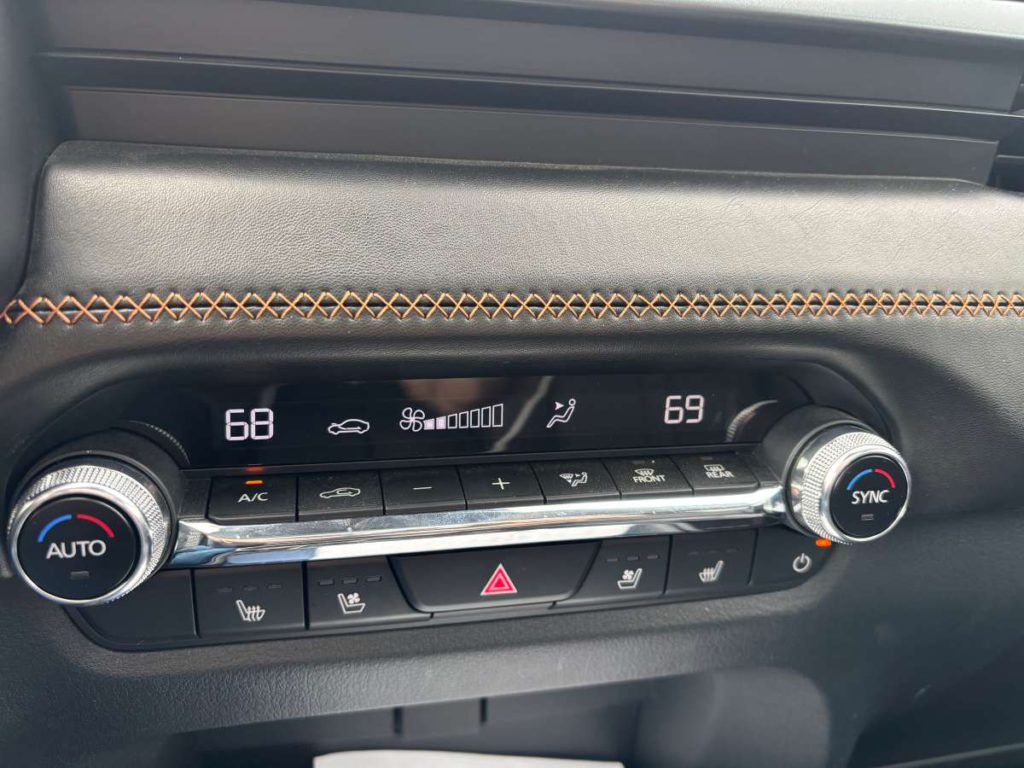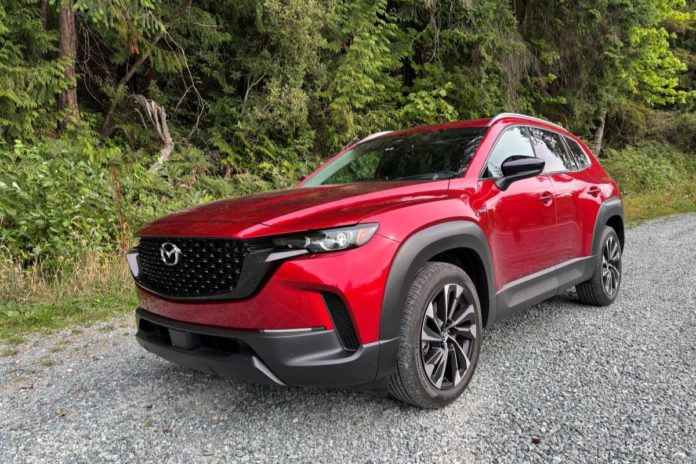It’s no secret that the auto business is a tough one, challenging even the largest companies to seek new ways to get new cars made and out to the public. One consequence has been new collaborations among automakers. This month’s test car, the 2025 Mazda CX-50 Hybrid AWD is a great example, which we mean in every sense of the word.
Mazda is a relatively small car company. Toyota is one of the world’s largest and happens to hold 5% of Mazda. The relationship is best represented by the CX-50 Hybrid, new for the 2025 model year. In essence, the compact SUV takes a proven Toyota hybrid powertrain and drops it into one of Mazda’s newer models.
The result is a good-looking (Mazda’s kodo design themes remain one of best in the automotive world) car that can hold its own in the most important categories in a hyper-competitive segment.
The Toyota part
The engine, transmission and hybrid technology for the CX-50 Hybrid comes from Toyota and is virtually identical to that found in the RAV4 Hybrid. The good news is this is proven hardware from the world leader in hybrid technology. Between the 2.5-liter 4-cylinder engine and the electric motors, the Mazda puts out 219 horsepower, more than enough for all of the normal freeway onramp accelerations and two-lane truck passing operations. The package is also capable of towing 1,500 pounds.
The only bad news is that the engine and its continuously variable transmission let you know when it’s being pushed, delivering its power with a loud buzzing while still moving the 4,000-pound vehicle as requested. Maybe overriding the buzz is the impressive efficiency of the hybrid system—our fuel economy numbers reported on the dash readout were consistently between 36 and 40 mpg, welcome numbers for a class that’s usually 10 mpg less.
The Mazda part
Getting that efficient power to the ground moves into Mazda territory. As we’ve come to expect from Mazda engineers, the CX-50 handles a notch above the typical compact SUV. Road feel is solid and cornering was effortless. The vehicle is all-wheel drive and has a Trail mode, but the CX-50 is really a highway car that can do light off-roading.

The packaging is all Mazda. Our test car had all of the smooth and swoopy Mazda kodo curves topped with a shimmering paintjob dubbed Soul Red Crystal Metallic. Inside, the black leather seats featured brown top-stitching, a classy look for the interior. I found the seats comfortable, but a seatmate said he would not recommend any extended trips because of what he characterized as a hardness to the cushions.
Our topline model (Premium Plus, which ranks over Premium and Preferred) had a Bose 12-speaker audio system that offered fine tunes, but the path to get to it was torturous and its display screen small and difficult to reach (it was a touchscreen). Mazda uses an old-style rotary knob to navigate the different screens. But it’s not intuitive and really needs to catch up with the kind of technology found in comparable vehicles.
The 34 cubic feet behind the second-row seats feels bigger than it is. This model came with roof rails for additional hauling if needed.
The sum of the parts
No vehicle is a mere compilation of its components. In the CX-50’s case, integration is key. Unlike some other automotive collaborations, the balance here is refined. Astute observers might recognize the particular characteristics of Toyota’s hybrid system, but given Mazda’s premium packaging, the overall image of the car remains that of a quintessential Mazda.
We think that’s a good thing, because the looks and driving dynamics are why we like most Mazdas. Having an efficient, proven drivetrain from Toyota is a plus. The whole package in our Premium Plus was $42,065, including delivery charges, but with a few less bells and whistles, the hybrid models start at $33,970.
If you’re in the market for a compact SUV, want a stylish ride with great fuel economy, the 2025 Mazda CX-50 Hybrid should be on your shopping list. It might be worth taking a look at current stock as it’s uncertain how tariffs might affect a U.S.-assembled car that is 55% U.S./Canadian content, 35% Japanese and 10% Mexican. Maybe that just underscores what a hybrid it is.




